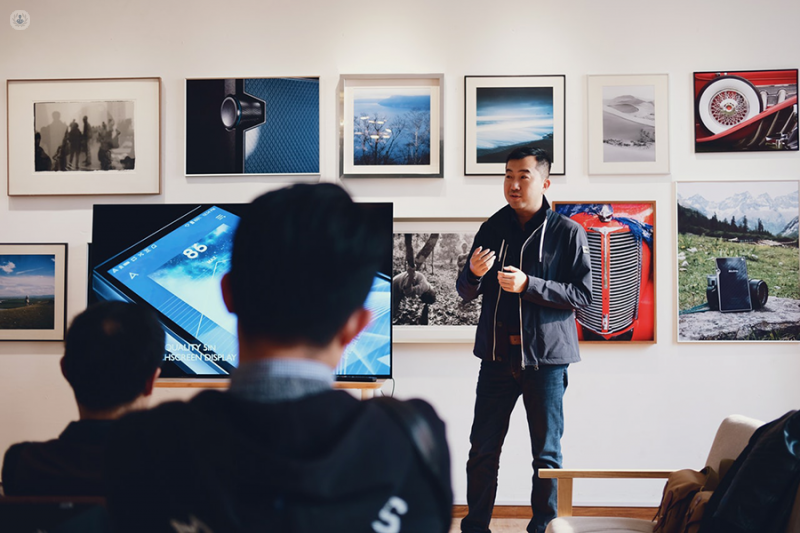5 ways to stop yourself from fainting
Escrito por:Sometimes we have to do things that make us feel faint – getting on a crowded train, giving blood, or speaking in public. Knowing how to stop that feeling in its tracks and prevent a full-blown fainting episode can be extremely empowering. The good news is that there are simple things everyone can do to stop themselves from fainting – as consultant cardiologist and fainting world expert Dr Boon Lim explains:

1. Make sure your blood pressure isn’t too low
You can find out your blood pressure by visiting the doctor or by using a home blood pressure monitoring kit. If your blood pressure is low, you are more likely to experience fainting. Luckily there are some simple steps you can take to increase your blood pressure.
Firstly, your need to increase your fluid intake – aim for at least 2.5-3 litres a day. Secondly, it’s important to increase your salt intake. This goes against a lot of health advice you’ll see online! However, most people don’t know that salt and water increases the volume of the plasma in your blood, so ensuring you have plenty of fluids and salt is the most effective thing you can do to tackle fainting.
2. Lie or sit down
If you start to feel faint, try and sit down – whether it’s in the shower, the bus or the train. If you have the space, lie down and elevate your feet. When you elevate your feet you’re effectively using gravity to give your heart a blood transfusion, because the blood that has been pooling in your legs is now flowing back to your heart and other organs. This is a very fast and easy way to raise your blood pressure and feel better.
3. Learn how to do isometric counter-pressure exercises
If you can’t lie down, you can still manually pump the blood back into your heart from your legs with the incredible power of your leg muscles. Your thighs and glutes are the largest muscles in your body, and when you squeeze these, along with your calves, you can force the blood back up your body and increase your blood pressure. These are known as isometric counter-pressure exercises. You can even carry out these exercises sitting down!
4. Wear compression stockings
For most people, the first three strategies should prevent the vast majority of fainting episodes. However, some of us experience repeated fainting episodes and have to go into situations regularly where fainting is much more likely – such as commuting daily on the London Underground. If you’re fainting several times a year despite carrying out the strategies mentioned, you might want to consider wearing compression stockings.
Just as your muscles can squeeze your leg veins from the inside, compression stockings can squeeze your leg veins from the outside and stop the blood from pooling in your legs and feet. The stockings need to come up at least to your thighs to work, and they need to be grade 2 or grade 3 compression stockings. Providing you have the right kind, they will squeeze the leg veins and force blood up into the rest of your body against gravity.
Finally, if all of the above strategies don’t work…
5. Medication you can take
The most commonly prescribed drugs for fainting are midodrine and fludrocortisone. Midodrine acts by squeezing the peripheral blood vessels – those in your legs and feet – as well as the blood vessels in your gut, forcing the blood back into your core and your heart. Meanwhile, fludrocortisone helps your kidneys to absorb salt, which expands the plasma in your blood and increases your blood pressure. For those who have repeated episodes of fainting, these medications can make a huge difference.
If you’d like to book a consultant with Dr Boon Lim about fainting, click here.


